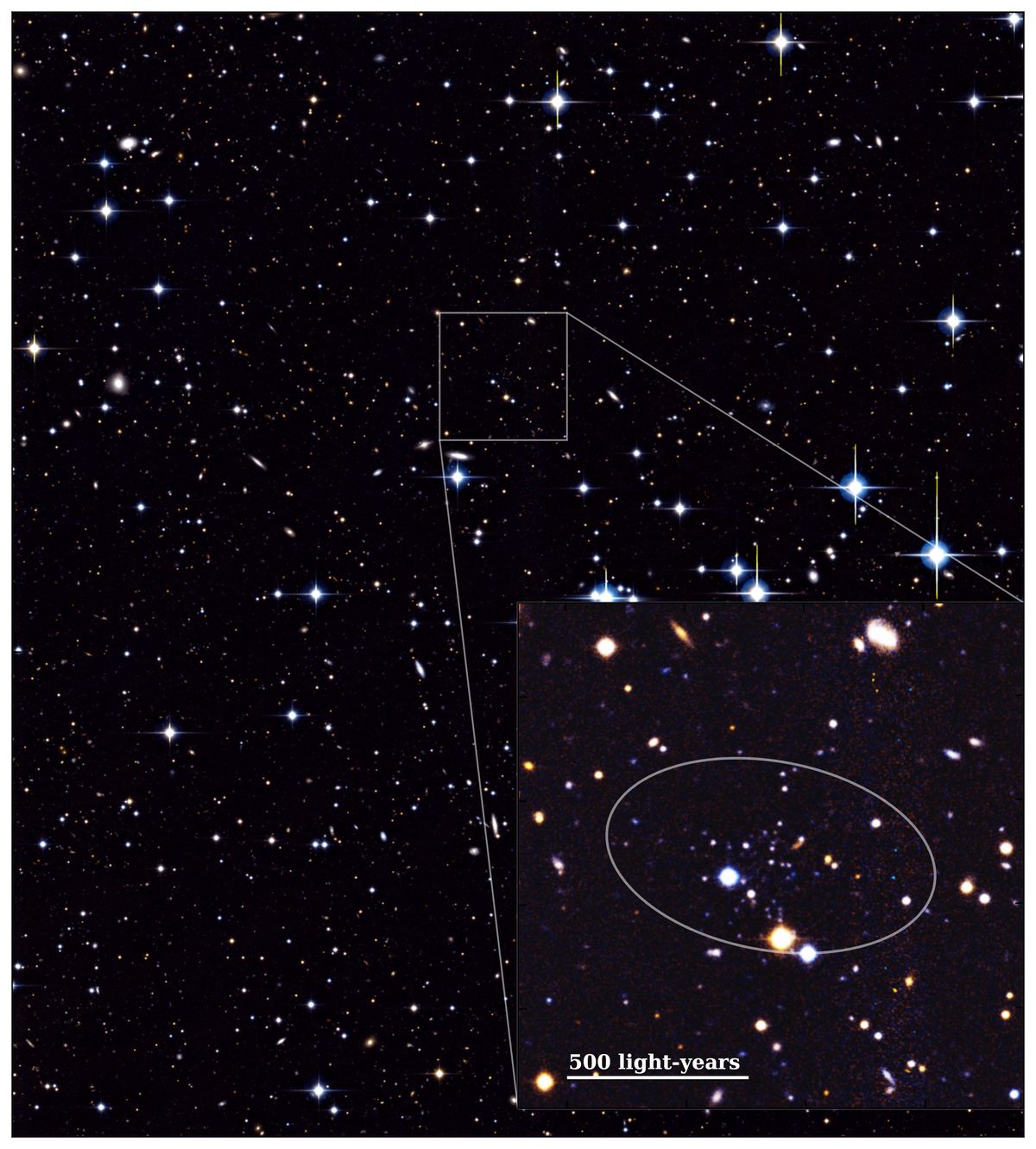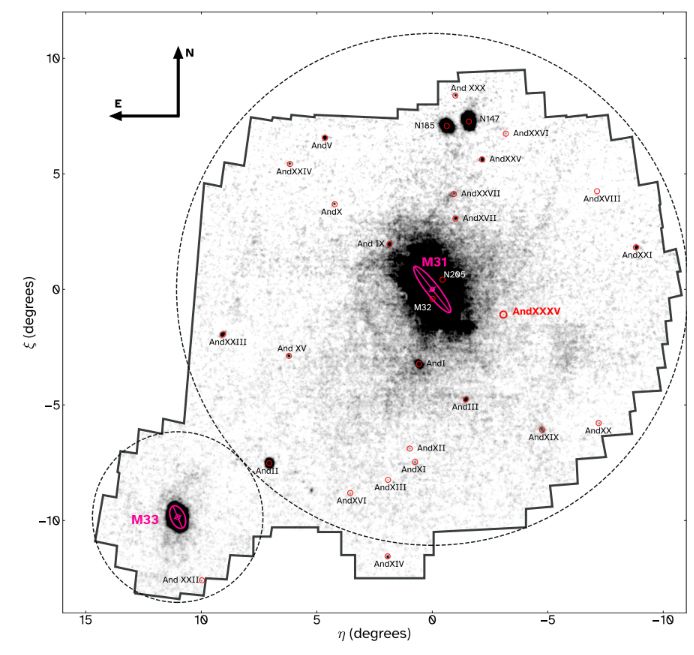Like "a human the size of a grain of rice," this galaxy is incomprehensible 🌀
Follow us on Google News (click on ☆)
According to Eric Bell, a member of the team and a professor at the University of Michigan, it is a fully functional galaxy, but about one-millionth the size of the Milky Way. It's like having a fully functional human the size of a grain of rice.

Andromeda XXXV, the faintest and smallest known satellite galaxy in the Andromeda system, is located about 3 million light-years away.
Credit: CFHT/MegaCam/Principal Investigator: Alan W. McConnachie; Image Processing: Marcos Arias
Andromeda XXXV, a satellite galaxy of the Andromeda Galaxy, astonishes scientists. Contrary to what current models predict, this dwarf galaxy survived the extreme conditions of the early universe, where galaxies of this size were expected to be destroyed. Its discovery suggests that our understanding of galaxy formation and evolution is still incomplete.
Dwarf galaxies, though common, remain enigmatic. Their small size and low luminosity make them difficult to observe, especially at great distances. Until now, most information about these galaxies came from the satellites of the Milky Way. The discovery of Andromeda XXXV opens a new window for studying dwarf galaxies around other large galaxies.
The team, led by Marcos Arias from the University of Michigan, used massive astronomical data and the Hubble Space Telescope to identify Andromeda XXXV. This galaxy, though tiny, is fully functional, challenging theories about the survival of small galaxies in the early universe.
An intriguing aspect of Andromeda XXXV is its long period of star formation, which contrasts with that of the Milky Way's dwarf galaxies. While the latter stopped forming stars about 10 billion years ago, Andromeda XXXV continued this process until about 6 billion years ago. This suggests that the mechanisms for halting star formation differ among dwarf galaxies.

A map showing the Andromeda Galaxy and its satellites. The new companion galaxy Andromeda XXXV is highlighted in red.
Credit: M. Arias et al. Astrophys. J. Lett. (2025)
The survival of Andromeda XXXV in the early universe, despite hostile conditions, poses a puzzle. Scientists believed that small galaxies would be 'fried' by the intense heat of the young universe, losing their gas necessary for star formation. Yet, Andromeda XXXV not only survived but also continued to form stars for billions of years.
This discovery raises many questions about the processes of galaxy formation and evolution. Future space missions could help solve this mystery, but they might also open new questions, just as the discovery of Andromeda XXXV has done. Astronomers still have much to learn about the universe around us.
What is a dwarf galaxy?
Dwarf galaxies are small galaxies composed of a few billion stars, compared to the hundreds of billions of stars in large galaxies like the Milky Way. They play a crucial role in our understanding of the universe, as they are considered the building blocks of larger galaxies.
These galaxies often orbit more massive galaxies, acting as satellites. Their study allows astronomers to better understand the processes of galaxy formation and evolution, as well as the distribution of dark matter in the universe.
Despite their importance, dwarf galaxies are difficult to observe due to their low luminosity. Technological advancements, such as space telescopes, have enabled the discovery of more and more of these galaxies, enriching our knowledge of the universe.
How do galaxies form?
Galaxy formation begins shortly after the Big Bang, when matter begins to clump together under the influence of gravity. These clumps of matter form clouds of gas and dust, which collapse to give birth to the first stars and galaxies.
Dwarf galaxies, like Andromeda XXXV, are among the first structures to form in the universe. They play a key role in the assembly of larger galaxies, which form through the merging and accretion of these small galaxies.
The study of dwarf galaxies allows scientists to better understand the conditions of the early universe and the mechanisms that led to the formation of the cosmic structures we observe today. Each discovery, like that of Andromeda XXXV, adds new pieces to the puzzle of cosmic evolution.